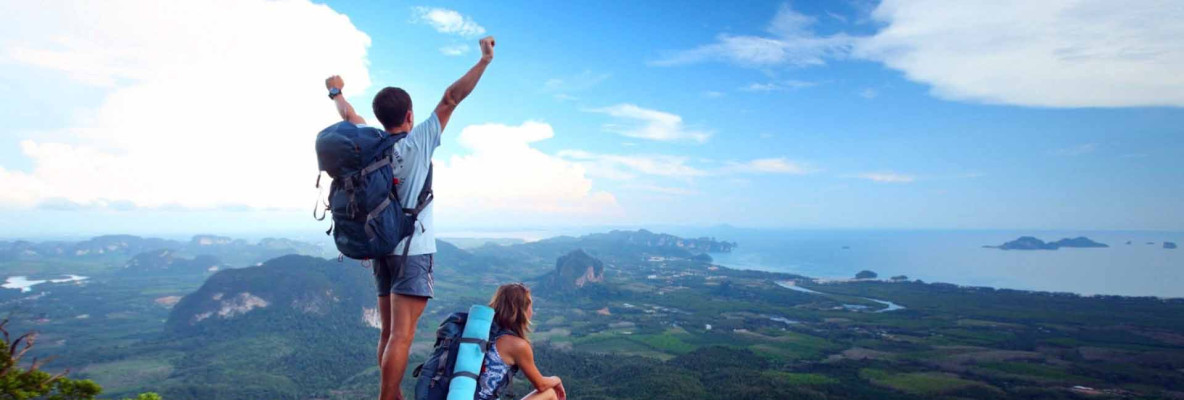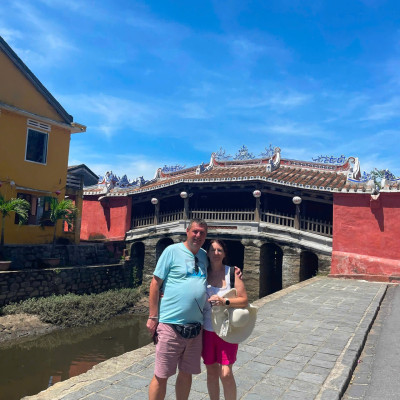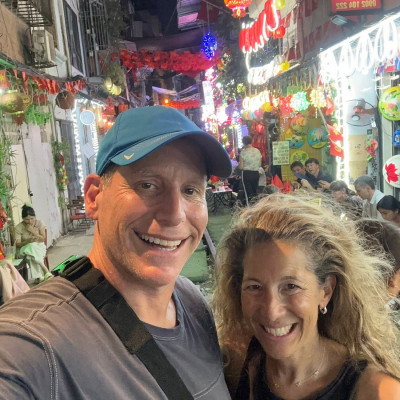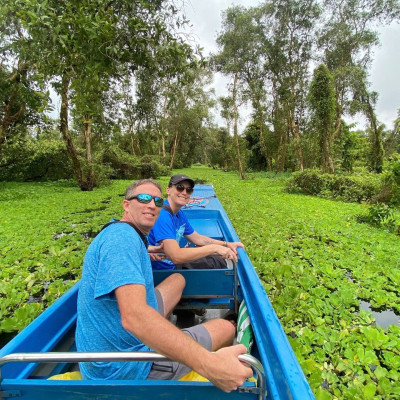16 days - 16 DAYS LAOS TOUR BEST SELLER - NORTH TO SOUTH
Itinerary
DAY 1. LUANG PRABANG - ARRIVAL -

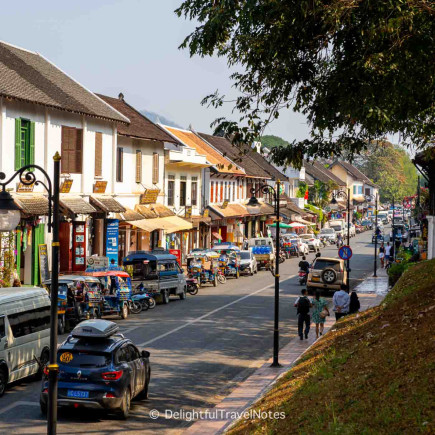
Upon arrival, transfer to the hotel. Luang Prabang is a very special city! It is enchanting with its magnificent location amidst mountain ranges and its historic temples, which gave the city the title of World Heritage Site by UNESCO.
Overnight in Luang Prabang
What's Included
DAY 2. LUANG PRABANG - TAK BAAT / CITY TOUR B, L
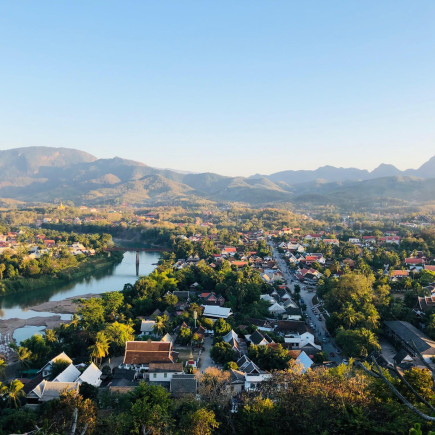
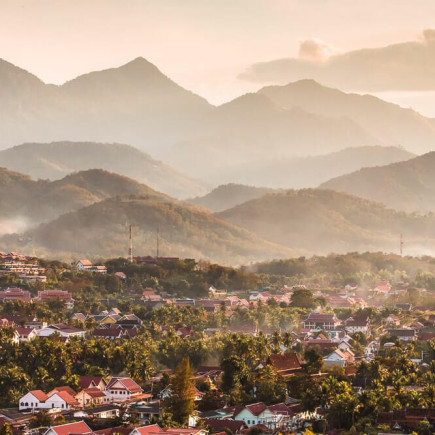
Explore the city by Tuk Tuk. The Tuk Tuk (a motorized-rickshaw) was brought to Southeast Asia in 1934 from Japan, and has since then become an icon of the region. The classic Tuk Tuk is a sheet-metal roof covering an open frame which rests on three wheels. They’re one of the most popular forms of transportation in Laos, Thailand and Cambodia, and this Southeast Asian emblem is the perfect vehicle for an open-air tour of Luang Prabang.
Departing from the hotel at 08:30, get on the Tuk Tuk to the open-air Morning Market in the old town. There are only a few large grocery stores here—instead, food is still produced by small farming families and villages and brought to Luang Prabang from the surrounding rural areas. Guide will explain the common vegetables and fruits that are in season and pick up some snacks for later.
A short walk from the market is Wat Mai Suwannaphumaham (“New Monastery ''), the National Museum (Royal Palace) and Hor Phra Bang. After the museum, travel again by tuk tuk through more of the picturesque town to Wat Visounnalath.
Another short tuk tuk ride along the Nam Khan River to Wat Xieng Thong. End the day’s tour on top of Mount Phousi.
MORNING MARKET
This small market is the Laotian "supermarket" where they come to buy their fresh fruit, vegetables and meat, which are offered in showcases which are not always the way we used to see in most of our countries. Some products are coming from the jungle around, and will be for sure highly exotic for travelers from western countries.
WAT MAI SUWANNAPHUMAHAM
The impressive Wat Mai Suwannaphumaham is one of Luang Prabang’s largest and most richly decorated temples. Both its interior and exterior are extensively adorned with black and red lacquer decoration and gold leaf. The temple, also known as Wat Mai, meaning “new temple” , was founded around 1780 by King Anurat of the Luang Prabang Kingdom.
NATIONAL MUSEUM (ROYAL PALACE) AND HOR PHRA BANG
Set in a spacious, well-tended garden just off one of Luang Prabang’s main boulevards (Sisavangvong Road), you will find the fascinating Royal Palace Museum, which is also known as Hor Kham. The museum is well worth a couple of hours of your time if you want to learn more about Lao history and culture. Originally the residence of the king, the museum was designed in the French Beaux-Arts style, with many tasteful accents of traditional Lao culture. When the communists came to power in 1975, they took over the palace and sent the royal family to re-education camps. The palace was converted into a museum that was opened to the public in 1995 after careful renovation, and remains in good condition. The grounds contain a number of other buildings including a new exhibition hall and a chapel (Hor Phra Bang), and a statue of King Sisavangvong.
WAT VISOUNNALATH
Founded in 1512 during the reign of King Visounnalath (1501-1520), this temple was a symbol of the Kingdom’s unity. The carved wooden railings in the temple’s windows are reminiscent of the Wat Phou temple in Champasak, in the far South of Laos. Inside you can admire ancient statues and steeles. Also located on the grounds of this temple is the That Pathoume, also known as That Mak Mo (the watermelon stupa) because of its shape.
HEUAN CHAN LUANG PRABANG
A treasure trove of Lao antiques built in the early 1900s, almost 120 years old. It is a rare surviving example in Luang Prabang of a pre-colonial Lao style aristocratic mansion dating back from the days before the colonial influences.
WAT XIENG THONG
Founded at the tip of the Luang Prabang peninsula is one of Laos most beautiful and richly decorated temples. This temple is a Royal temple built by King Setthathirath in 1559 on the banks of the Mekong river. It is one of the few temples that was not destroyed during the Black Flag Army invasion of 1887.
MOUNT PHOUSI
Rising 150 m above the center of town, Mount Phousi cuts a distinctive figure on the Luang Prabang skyline. The hill is popular as a place to watch the sun rise or set over the Mekong River. From the summit, enjoy a spectacular 360 degree outlook across the city and its many temples, and out over the surrounding landscape to the mountains in the distance. For a complete experience, go up Mount Phousi on one side and use the other set of steps to make your way down again.
Overnight in Luang Prabang
What's Included
DAY 3. RICE IS LIFE EXPERIENCE / THE LIVING LAND FARM & KUANG SI WATERFALL B, L
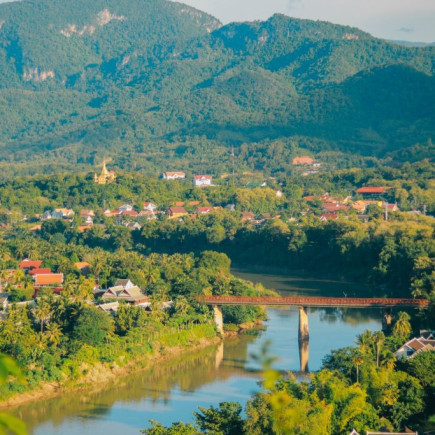

A day to follow the footsteps of the local rice farmers. Spend half a day in the rice field and forget that you are a tourist! On a traditional working organic farm you will be introduced to every step of the rice industry and will of course be involved in the selection of the seeds, the water buffalo plowing, the tedious planting etc. And of course there will be rice too to eat! Well-fortified with Asia's staple food, in the afternoon it continues into the breathtaking nature to explore the Tad Kuang Si waterfalls. The short drive leads through rice fields, small villages and hilly landscape. A detour to a Hmong village will tell you something interesting about the centuries-old culture of these people. The Kuang Si waterfalls are an ideal place to relax and recharge your batteries. After all, today the Bear Rescue Center and some villages await you, where you can get to know traditional handicrafts.
LIVING LAND FARM
Spend a morning at the Living Land Farm, experience how rice is grown on the farm and the life of a farmer and try your hand at some of the activities.
KUANG SI WATERFALL AND BEAR RESCUE CENTER
Kuang Si Waterfall is the biggest waterfall in the Luang Prabang area with three tiers leading to a 50-meter drop into spectacular azure pools before flowing downstream. The pools also make great swimming holes and are very popular with both tourists and locals. Visit the Bear Rescue Center in the Kuang Si Waterfall.
KUANG SI BUTTERFLY PARK
Situated 300 m before the entrance of Kuang Si Waterfall. Kuang Si Butterfly Park is a project that was initiated in January 2014 by 2 passionate people from Holland. The mission was to create a research center studying and publishing about Laos butterflies, host plants and preservation due to environmental issues in Laos. A nice little café on the pond can finish the visit, for having a good coffee, delicious baguette in a beautiful surrounding.
Overnight in Luang Prabang
What's Included
DAY 4. PAK OU CAVES - MEKONG BOAT TRIP B, L
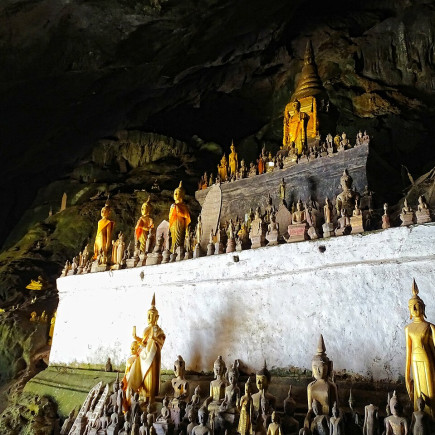
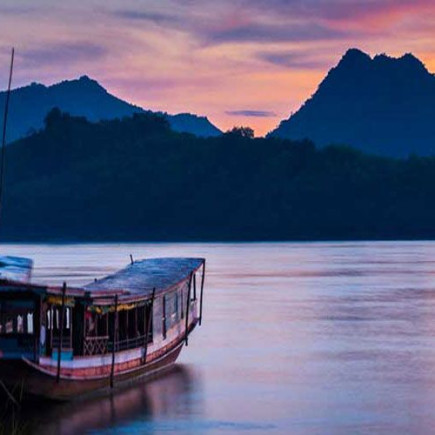
Aboard a traditional, slow boat, the Mekong goes upstream. The Mekong is the tenth longest river in the world and has a biodiversity in its basin that is only surpassed by the Amazon in the world. At the confluence of the Nam Ou and Mekong you will go ashore to explore the Pak Ou Caves, where centuries-old stupas, shrines and thousands of Buddha sculptures testify to the spiritual traditions of mankind. On the Mekong, it's back to Luang Prabang. In Ban Xang Khong, watch how craftsmen from the bark of the mulberry tree conjure up special paper.
PAK OU CAVE
One of the most respected holy sites in Lao; Pak Ou Caves have a history dating back thousands of years. Packed with over 4,000 Buddha icons, the caves, a shrine to the river spirit and Lord Buddha, are set in a dramatic limestone cliff at the point where the Mekong joins the Nam Ou River. There are two caves to visit, the lower cave called Tham Ting and the upper cave Tham Theung, both boasting miniature Buddhist figures that are mostly made from wood.
Overnight in Luang Prabang
What's Included
DAY 5. LUANG PRABANG – VANG VIENG B, L
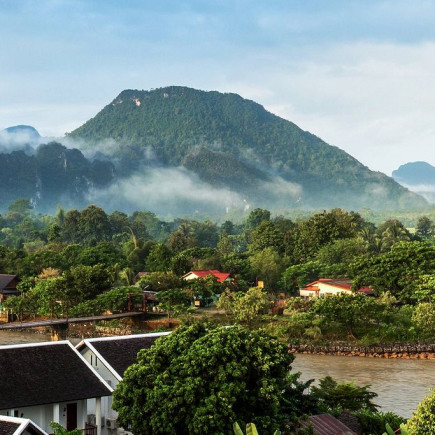
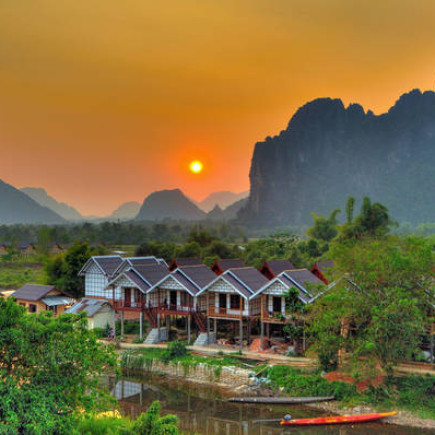
(alt. by train / tba)
Say goodbye to Luang Prabang and head to the imposing mountainous region of Central Laos! Along the way, visit some Hmong villages. This interesting indigenous hill tribe migrated from southern China to Laos in the 18th century. The arrival in the small town of Vang Vieng, which is located between gigantic limestone cliffs in the magical valley of the Nam Song River.
VANG VIENG
The small town of Vang Vieng is located 150 km north of Vientiane. This is a place of a dreamlike landscape of bizarre limestone mountain peaks and scenic cliffs with the Nam Song River bisecting the town. At the base of the town’s limestone mountains are a network of caves.
Overnight in Vang Vieng
What's Included
DAY 6. VANG VIENG - BUDDHA PARK - VIENTIANE B, L


Today we drive south Vientiane on the banks of the Mekong, which was already declared the capital of the Kingdom of Laos in 1563.
Colonial administration was established here during the French colonial era, and thanks to the economic growth of recent years, the city has become the country's most important economic center.
BUDDHA PARK (aka Wat Xieng Khuan) is a famous sculpture park with more than 200 religious statues including a huge 40-meter high reclining Buddha image.
The best spot for photography here is on top of the giant pumpkin structure standing about three stories high. The entrance is crafted to look like a demon’s mouth (about three meters high) with a stone ladder inside leading to a bird's eye view of the entire Xieng Khuan Park.
It was built in 1958 by Luang Pu Bunleua Sulilat, a monk who studied both Buddhism and Hinduism. This explains why his park is full not only of Buddha images but also of Hindu gods as well as demons and animals from both beliefs.
The most outstanding ones include Indra, the king of Hindu gods riding the three-headed elephant (aka Erawan and Airavata), a four-armed deity sitting on a horse and an artistic deity with 12 faces and many hands, each holding interesting objects. They are all equally impressive not only because of their enormous size but because they are full of interesting details and interesting motifs.
There is a local eatery and café offering food and drinks to tourists at one end of the park right next to the Mekong River that makes a great spot to chill after all the walking and climbing. Among the popular snacks are papaya salad, fried bananas and cold Lao beer.
Overnight in Vientiane
What's Included
DAY 7. VIENTIANE - CITY TOUR B, L

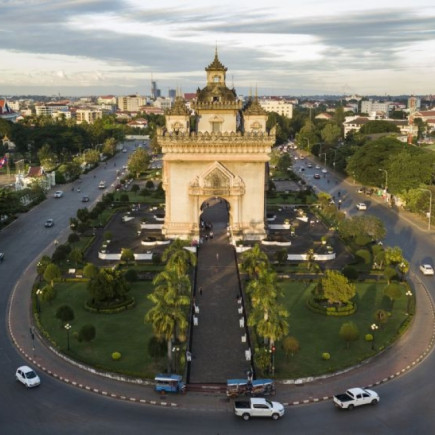
Discover the charms of Vientiane, a quiet but endearing capital city. Tour includes Wat Sisaket, Hor Phra Keo, That Luang Stupa and Patuxay Monument. Visit markets where you can find an abundance of locally made handicrafts.
WAT SISAKET
Wat Si Saket is an early 19th century Buddhist monastery in the center of Vientiane. It is the oldest temple of the town that is still in its original form. The temple was built in 1820 near the Royal Palace in the center of town by King Anouvong, the last King of Vientiane. It is one of the very few temples that survived the destruction that came with the Siamese armies that looted and burnt the city in 1827. The temple was restored in the 1930’s. Next to the cloister is the more recent, active part of the temple with resident monks. Right across the street is another one of Vientiane’s most important temples, the Hor Phra Keo.
HOR PHRA KEO
Hor Phra Keo is one of Laos’ most highly venerated temples, now turned into a museum. The temple derives its name from the Emerald Buddha, Thailand’s most highly revered Buddha image which was enshrined in the temple for over 200 years
THAT LUANG STUPA
That Luang Stupa or “Great Stupa” is the most important Buddhist monument in Laos. The large golden stupa in Vientiane is believed to enshrine a breast bone of the Buddha. The pagoda also known as That Luang is officially named Pha Chedi Lokajulamani, which translates to “World Precious Sacred Stupa”.
PATUXAY MONUMENT
Vientiane' s Arc de Triomphe replica is a monumental sight. Officially called 'Victory Gate' and commemorating the Lao who died in pre-revolutionary wars, it was built in the 1960s with cement donated by the USA intended for the construction of a new airport. Climb to the top for panoramic views over Vientiane.
COPE VISITOR CENTER
Overnight in Vientiane
What's Included
DAY 8. VIENTIANE – PAKSAN – KONGLOR B, L
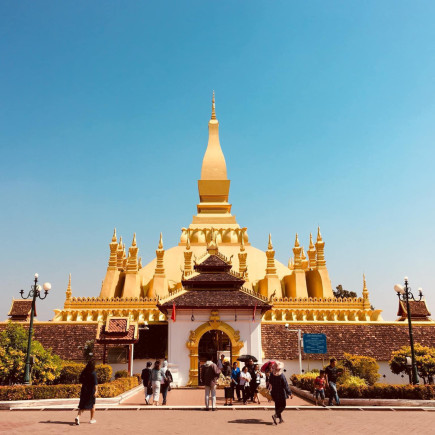
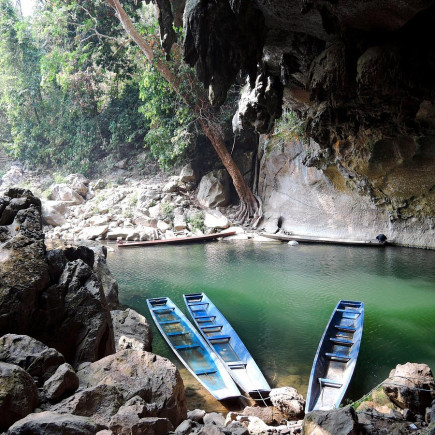
WAT PHRA BAHT
70 km east of Vientiane and is best known for its large Phabaht (Buddha footprint) shrine and monastery. It is an important pilgrimage place for lowland Lao from Bolikhamxay and Vientiane.
WAT PHONSAN
Located on the Mekong Riverside and 2 km away from Wat Phra Baht. Both temples are not located in the same area, but only had a link from their legend. This is the reason why people called these 2 temples in one name as Wat Phabatphonsan.
Overnight in Kong Lor
Distance: 320 km / 6 hrs
What's Included
DAY 9. KONG LOR CAVE - THAKHEK B, L
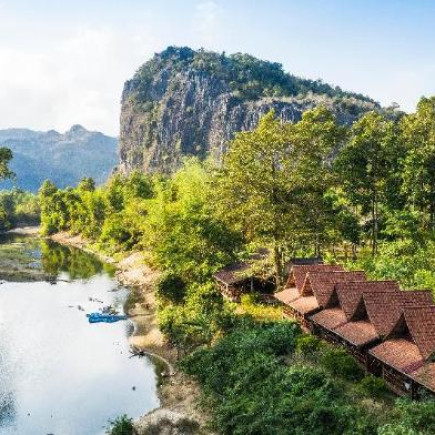
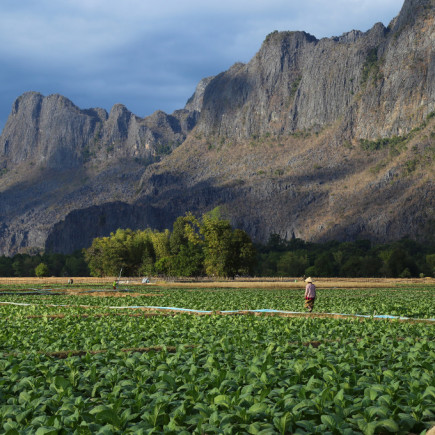
Visit Tham Kong Lor Cave, explore the karst limestone caves while drifting along a winding, underground river surrounded by spectacular rock formations. Then we continue to Thakhek, a small, clear city on the Mekong.Unterwegs We stop at the 'Great Wall' (Kamphaeng Yak) about their edification is very little known; and at the well-known and revered Sikhottabong Stupa, located on the Mekong.
KONG LOR CAVE
This amazing 7.5 kilometers-long limestone cave was formed by the Hinboun River which still flows through the cave year-round. A boat ride right through the main cave, which is up to 90 meters wide and 100 meters high.
THAT SIKHOTTABONG STUPA
On the east bank of the Mekong south of Thakhek, is the most important cultural and religious site in South Central Laos. The history of the 16th century / 500 year old stupa is linked across the Mekong River with cultural sites in Thailand. The region’s main event is the Sikhottabong festival in February, when crowds make a pilgrimage to the Stupa from all over Laos.
Overnight in Thakhek
Distance: 190 km / 3.5 hrs
What's Included
DAY 10. THAKHEK – SAVANNAKHET B, L
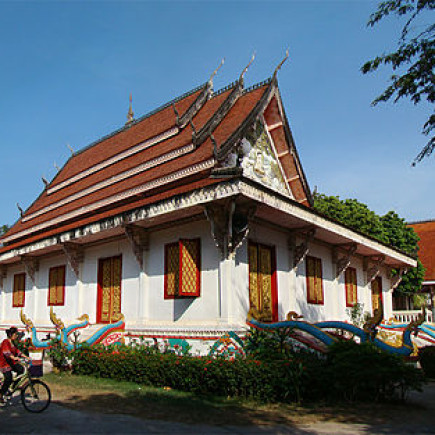
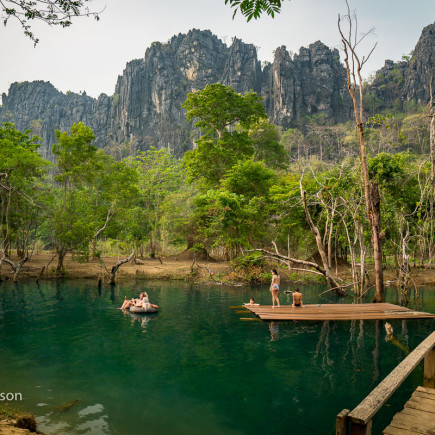
Overland southwards to Seno and Savannakhet, the capital city of Khammouane Province. Visit That Ing Stupa and Dinosaur Museum.
The old French Quarter of Savannakhet downtown invites you for an evening stroll, and you can sit along the Mekong River Bank for a sunset drink & snack.
THAT ING HANG STUPA
Is about nine meters high with beautiful carving and decoration. It’s reported to house a relic of Buddha’s spine. The 16th century stupa is located in Savannakhet, Central Laos. The sacred stupa is an important place of worship not only for Laotian Buddhists but also Thai Buddhists who live in northern Thailand. ‘Dress with respect’ is a must for all visitors. Women may be required to wear traditional phasin (Lao-style sarong) before entering the temple grounds. There are plenty of them available at the nearby stands and stores.
DINOSAUR MUSEUM
A museum where one can discover more about the Savannakhet prehistoric period. It is the latest addition to tourist sites here and is situated south of the stadium on Khantabouli Road. The hall displays a massive collection of fossils excavated from 1930 to the present. Four different dinosaurs and early mammalian remains from 200 million years ago are on display; even some fragments of a meteorite that fell to earth over 100 million years ago are kept here.
Overnight in Savannakhet
What's Included
DAY 11. SAVANNAKHET – TAD LO B, L

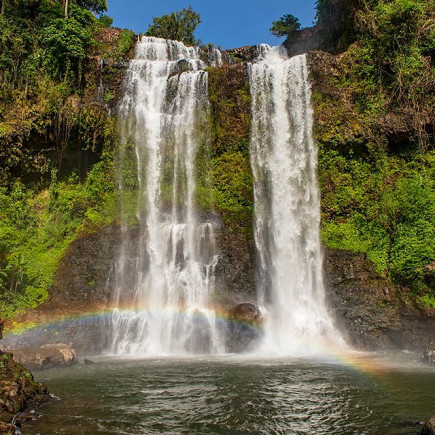
Drive to Tad Lo and on the way, visit the Hor Tay Phidok Library, located South of Savannakhet. Arrive late afternoon and check-in to the Lodge near the Tad Lo Waterfall.
HOR TAY PHIDOK LIBRARY
This is an impressive old structure originally built in the 17th century. It is the most important repository of palm leaf books written in Burmese Pali, Khmer and ancient Lao alphabets in Laos. There are currently 4,000 books containing 361 different stories. The books are maintained in good condition by monks and novices, as well as the local people.
Overnight in Tad Lo
Distance: 260 km / 5-6 hrs
What's Included
DAY 12. TAD LO - BOLAVEN PLATEAU - PAKSONG B, L

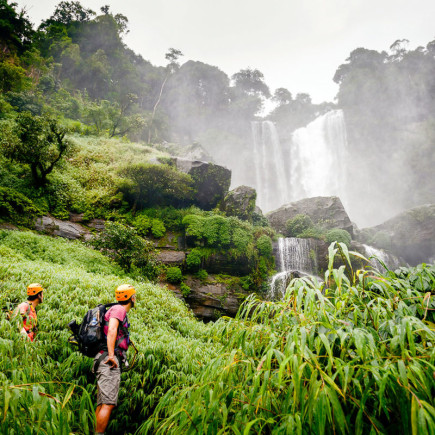
The renowned coffee of Laos is produced in this region. During colonization, the French promoted the production of high quality Arabica and Robusta strains. Production declined during the war years, but is now experiencing a renaissance. The climate of the plateau with its cooler temperatures and abundant rainfall makes it the perfect place for coffee production.
A chance to visit some coffee and tea plantations and taste the unique flavor of Lao coffee.
This area is rich in ethnic groups, predominantly Laven. Enroute the road between Pakse and Paksong on the western edge of the plateau, visit Tad E-Tu Waterfall. Continue to Tad Fane Waterfall, the highest in Champasak Province, and the nearby Tad Yuang Waterfall.
Overnight in Paksong
What's Included
DAY 13. BOLAVEN PLATEAU - CHAMPASAK / VAT PHOU - DON KHONG B, L
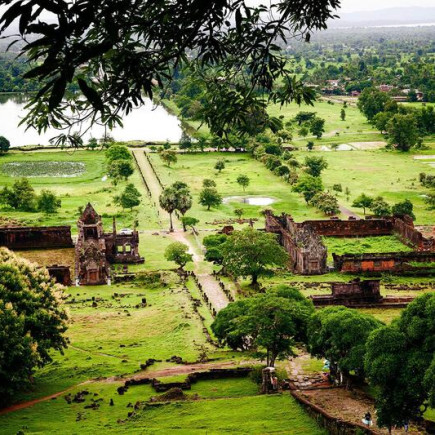
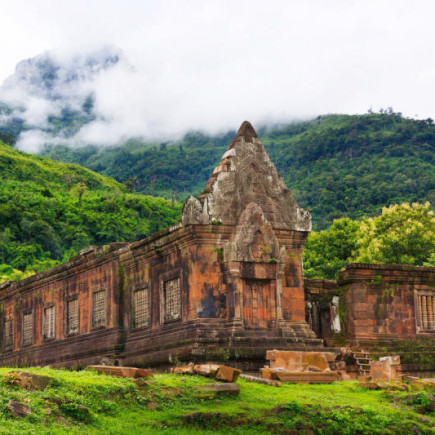
After breakfast, drive from Paksong down into the Mekong plain and visit the town of Champasak, where we’ll explore the French colonial architecture dotting the town. Further South, we reach the ruined Khmer temple complex of Vat Phou. Our next stop is the city of Champasak with its French colonial architecture. Continue to the largest islands in the 4000 islands region, Don Khong
VAT PHOU
Vat Phu is considered one of the oldest archaeological sites in Laos. One temple on the site was constructed around the 5th century but most buildings found in the complex are from the 11th to 13th centuries. Like other notable Khmer architecture in Southeast Asia, it was constructed using sandstone, laterite and bricks. Among many of the outstanding carvings there are Indra, the Hindu god of war, storms, and rainfall, riding a three-headed elephant and Vishnu riding on a garuda, an eagle.
Overnight on Don Khong
Distance: 220 km / 5 hrs
What's Included
DAY 14. 4000 ISLANDS - DON KHONE B, L
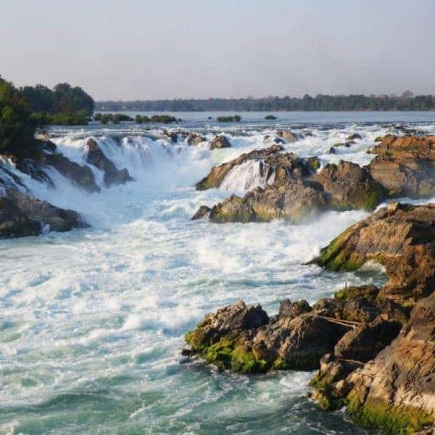

By boat to explore the area of 4000 Islands (Si Pan Don). SI PHAN DON
Meaning “Four Thousand Islands”, Si Phan Don is a group of islands in the Mekong river in the South of Laos. The area’s main attractions are its rural character, tranquility, the opportunity to watch the rare Irrawaddy dolphin and the Khone Phapheng Waterfall.
The pace of life is slow in the rural area where local people live in small wooden houses on stilts and where cows, goats, pigs and other animals roam around freely.
The most visited islands are Don Khone, Don Det and Don Khong, which is the largest island. Don Det is a small island that offers the most choice of accommodation. The island attracts a large number of backpackers. The larger Don Khone Island, which is just one kilometer from the Cambodian border, is less developed than Don Det. The island is connected with Don Det with a bridge built by the French during the colonial era. During the rainy season it is up to 12 km wide. When the water goes back, there are many small islands. It is this phenomenon that gave the region its name.
LI PHI WATERFALL
Is another amazing natural site to visit. Relax, enjoy the scenery, watch people fishing, and enjoy a dish of freshly caught Mekong fish. This waterfall is named after a sacred Buddha image (Pha), which was dropped in the water-never to be found again by the first King of Laos, Chao Fa Ngum, who was traveling the region by boat. The name Li Phi was given to the area because it acts like a giant fish trap (Li) and will kill any of those who dare to navigate it (Phi means ghost or dead person).
Overnight on Don Khone
What's Included
DAY 15. DON KHONE - KHONE PHAPHENG WATERFALL - PAKSE B, L


Return to Pakse with a stop at the legendary Khone Phapheng Cascade Falls.
KHONE PHAPHENG WATERFALL
13 km from the Cambodian border and east of Don Khone on the Mekong River is the pearl of the Mekong, Khone Phapheng Waterfall. Here the Mekong Cascades across a wide fault line, which slopes in curvilinear pattern and causes the river to pass through with awesome power. Khone Phapheng is the largest waterfall by water volume in due to its great power and steep descent, the waterfall renders this area of the Mekong unnavigable, before flowing peacefully South into Cambodia and Vietnam.
Overnight in Pakse
Distance: 190 km / 4.5 hrs
What's Included
DAY 16. PAKSE - DEPARTURE B
Transfer from hotel to airport for departure flight.
What's Included
Tour inclusions
- Accommodation with daily breakfast
- Private Transfers with AC
- English speaking tour guides
- All entrance fees as listed
- Meals as specified in the itinerary
- All adventurous activities as specified in the itinerary
- Bank transfer (if any)
- A Bottled water/day
- Airport Pick-up and Drop-off
Tour exclusions
- Early check-in or late check-out
- International flight tickets
- Meals not mentioned in the tour itinerary
- Other beverages during the tour
- Visa fees - as per country requirements
- Tips for Guides & Drivers
- Travel insurance
- Optional excursions and activities
- Personal expenses
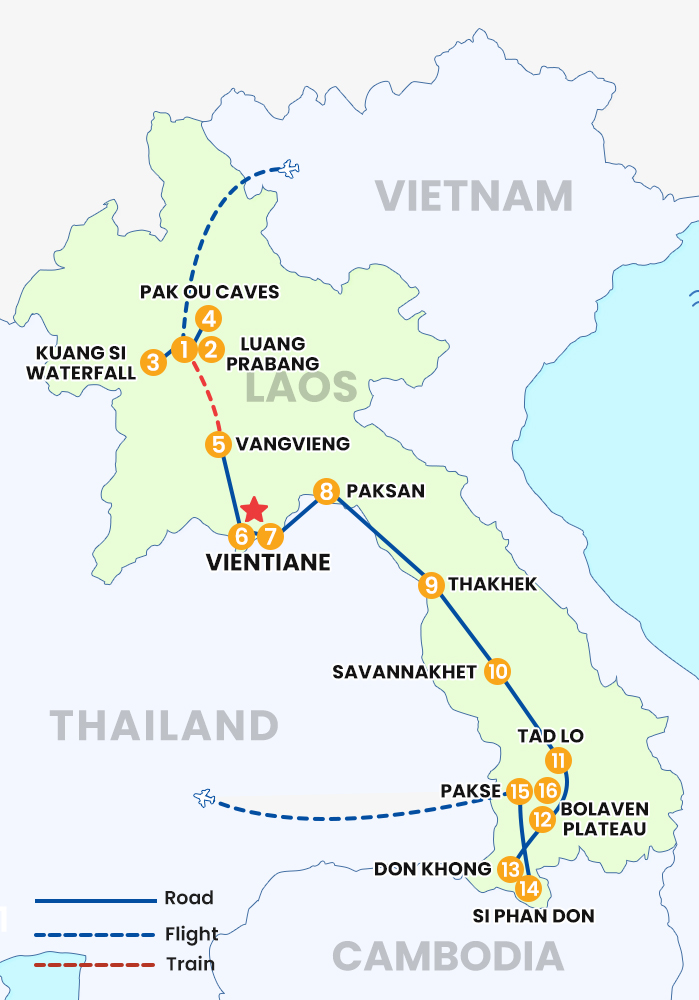
- Starting Point: Luang Prabang, Laos
- Ending Point: Pakxe, Laos
- Tour Type: Private tour
- Language: Operated in English
- Inclusions: Airport pick-up & drop-off, accommodation, professional guide, listed meals, entrance tickets, transportation, taxes, booking fees
Speak to Your Local Travel Expert





